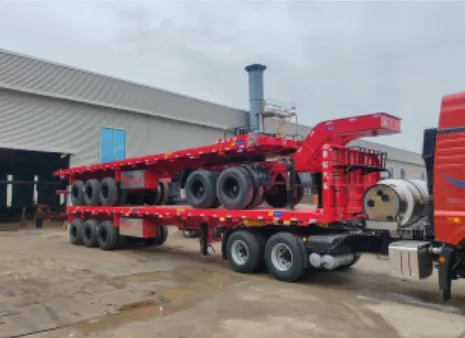engine mount replacement
Engine Mount Replacement A Comprehensive Guide
Engine mounts are a critical component in any vehicle, serving the essential purpose of securing the engine to the vehicle’s chassis while also absorbing vibrations produced during engine operation. Over time, these mounts can wear out, leading to a myriad of issues, including increased noise and vibrations, misalignment of the engine, and potential damage to other components. This guide will explore the importance of engine mounts, how to identify signs of wear, and provide a step-by-step process for replacing them.
Importance of Engine Mounts
Engine mounts are designed not only to support the weight of the engine but also to cushion the vibrations that occur during normal operation. They typically consist of a combination of rubber and metal, which helps dampen the vibration while providing stability. If the mounts fail, drivers may experience a rough ride, excessive engine movement, and even strain on the vehicle’s frame and other components.
Signs of Worn Engine Mounts
Recognizing the signs of worn engine mounts is crucial to maintain vehicle performance and safety. Some common indicators include
1. Increased Vibration A noticeable increase in engine vibrations transmitted to the cabin is often one of the first signs of mount degradation. 2. Engine Movement If you hear clunking noises when accelerating or decelerating, this might indicate that the engine is not securely held in place. 3. Misalignment You may notice that the engine sits at an odd angle, which can lead to further mechanical issues. 4. Visual Inspection Cracks or excessive wear on the rubber components of the engine mounts can be evident during a visual inspection.
Tools and Materials Needed
Before you start the replacement process, gather the following tools and materials
- Jack and jack stands - Socket wrench set - Screwdrivers - Torque wrench - Replacement engine mounts - Engine support bar (if necessary)
Step-by-Step Replacement Process
engine mount replacement

Step 1 Safety First Ensure the car is parked on a level surface with the engine off. Disconnect the battery to prevent any electrical issues during the process.
Step 2 Lift the Vehicle Use the jack to lift the front of the vehicle and then secure it with jack stands. Ensure that the vehicle is stable before proceeding.
Step 3 Locate the Engine Mounts Open the hood and locate the engine mounts. Typically, there will be one or two on each side of the engine. Refer to the vehicle’s service manual for specific locations.
Step 4 Support the Engine Before removing the mounts, use an engine support bar (or a jack with a block of wood) to gently support the weight of the engine. This prevents it from falling or shifting during the process.
Step 5 Remove the Old Engine Mounts Using the socket wrench, remove the bolts securing the engine mounts to the engine and chassis. Be cautious—some bolts may be tight and require extra effort. Once the bolts are removed, carefully lift the mount away from the engine.
Step 6 Install the New Engine Mounts Position the new engine mount in place and align it with the bolt holes. Insert the bolts and hand-tighten them to hold the mount in place.
Step 7 Torque to Specifications Refer to the vehicle’s service manual for the specific torque specifications for the engine mounts. Use the torque wrench to tighten the bolts to the recommended settings.
Step 8 Lower the Vehicle and Reconnect Battery Once all mounts are securely in place, remove the engine support and gently lower the vehicle back to the ground. Reconnect the battery.
Step 9 Test Drive Start the engine and take a short test drive. Pay attention to any vibrations or noises that were previously present. If everything feels smooth, you’ve successfully replaced the engine mounts!
Conclusion
Replacing engine mounts may seem daunting, but with the right tools, a bit of mechanical knowledge, and the steps outlined in this guide, it can be a manageable DIY project. Regular maintenance and prompt replacement of worn components can help ensure your vehicle runs smoothly and efficiently, keeping both you and your car safe on the road. If in doubt, always consult a professional mechanic to ensure the job is done correctly.
-
SINOTRUK HOWO 84 Electric Dump Truck for Eco-Friendly Heavy HaulingNewsJul.26,2025
-
The Fast 16-Gear Manual Transmission Assembly for Heavy TrucksNewsJul.25,2025
-
Mercedes Benz Actros 1848 42 Tractor Truck for Sale - Reliable PerformanceNewsJul.24,2025
-
High-Quality Water Pump Assembly for Sinotruk Trucks – Durable & ReliableNewsJul.23,2025
-
Premium Truck Engine Antifreeze Coolant Fluid for Heavy Duty VehiclesNewsJul.22,2025
-
FOTON View G7 Mini Bus: Affordable & Spacious TransportNewsJul.22,2025
Popular products

























